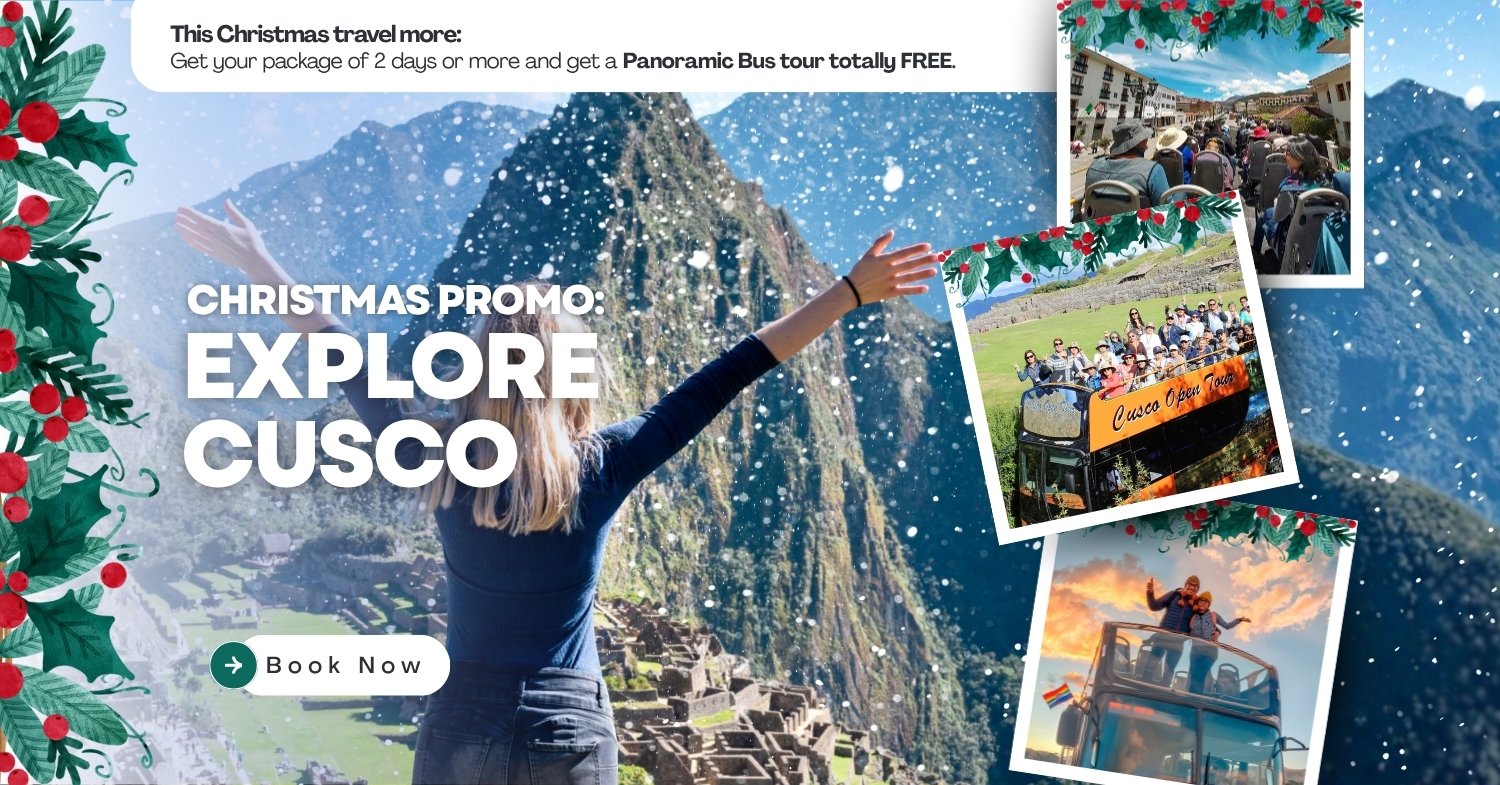

Machu Picchu is wonderful for anyone, even more so for children, this is why Nat Geo (National Geographic) put Machu Picchu on the list of 100 places that can change the lives of your children (100 Places That Can Change your Child's Life), and this is because the sacred city of Machu Picchu is impressive wherever you see it and it's great to visit with your children. Children love to know the story that Hiram Bingham had not rediscovered the Inca city of Machu Picchu, without the help of a child, like them.
Almost 600 years of its construction and 120 after its discovery, the mystery still surrounds the Inca city of Machu Picchu; a real residential, a sacred place, a refuge; it has a little bit of everything, but it was never determined for what exactly was built; this place will leave your children fascinated, from the moment they get on the train and go through the Sacred Valley of the Incas, to the exploration of the Inca city; it is possibly the flames of Machu Picchu that most attract the attention of your young children.
It could be said that this city results from an Andean engineering development of 5 thousand years; of the cultures that preceded the empire of the Incas. To enjoy the tour better, remember to bring plenty of water, in addition to some snacks. You can buy them when you arrive in the city of Ollantaytambo, since in Aguas Calientes (Machu Picchu town) and even more, in the entrance to the City of Machu Picchu, everything is much more expensive. Also carry sun protection when you come to Machu Picchu with kids.
You can tour the Inca city of Machu Picchu with kids, or ascend the amazing mountain Huayna Picchu with the biggest children (+ 12), but remember that the Machu Picchu tickets to climb the Huayna Picchu mountain must be booked 6 months in advance of otherwise you will not get one of the 400 tickets available to enter this mountain. The Machu Picchu mountain can be traveled by people under 12, although the route is very tired, the trails are wider and the top is a reward more than amazing. However, you can get amazing aerial views of the Inca city of Machu Picchu and all its natural environment, with only half an hour of travel, but as we said before, the top is amazing.
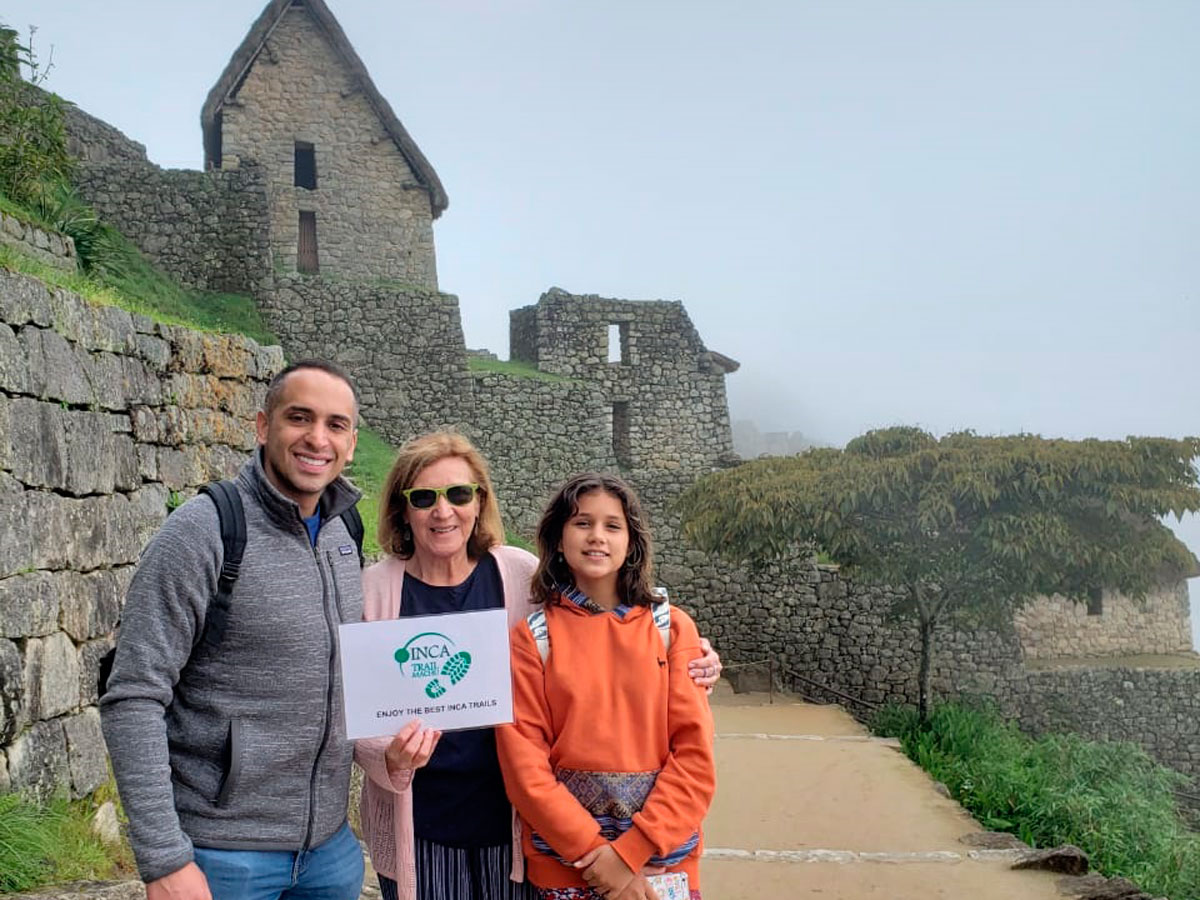
Many are the routes that take you to Machu Picchu, but none is like the Inca Trail Tours, the most famous pedestrian path in the Americas. After flying from the capital of Peru, Lima, you will arrive in Cusco to walk for four days along a path through forests and dense fog, millenary stone steps and discovering the ruins of ancient fortifications and Inca cities, and all the time enjoying majestic views.
Do not hesitate to hike the Inca trail with kids. You might think that it will be inconvenient to travel with them, but really the exuberant nature and the samples of living culture will have them entertained and amazed. They will see many new plants and animals, different people and words in an old language. The architecture will captivate your taste and you will not lose a second when taking a selfie.
What you have to remember, when hike the Inca Trail with kids, is that there is no turning back and there is no way to send vehicles or helicopters to be rescued. In cases of extreme emergency, the porters and the guide have access to stretchers (strategically stored in camps along the way) or mules, to carry out a sick or injured hiker. But most hikers who get sick during the walk, should walk out.
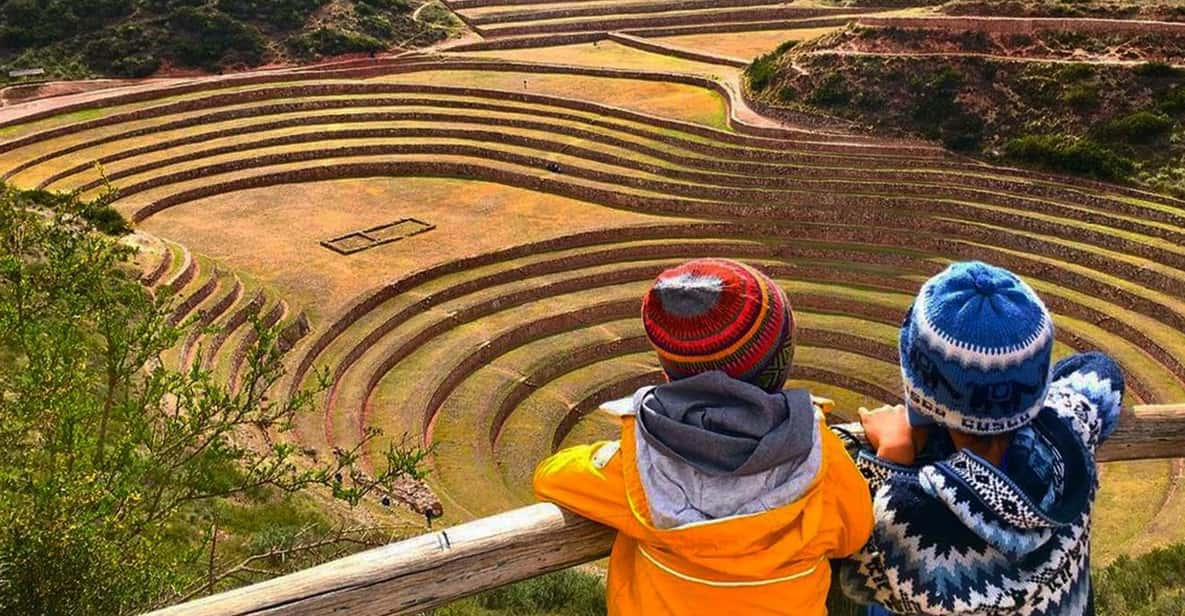
Keep in mind that to ascend to the mountains of Machu Picchu, you will have to buy Machu Picchu tickets in advance, also keep in mind that children under 8 years old do not pay. In addition, minors from 8 to 17 years old can obtain a 50% discount on their tickets to Machu Picchu.
All tickets must be reserved weeks in advance, but the Huayna Picchu ticket + circuit 3 must be reserved six and two months in advance. To come in high season (June to August), you must buy Huayna Picchu tickets months in advance:
Three things should be top of mind when you’re figuring out the best time for your Machu Picchu tour with kids: weather, crowds & festivals.
Machu Picchu is located in the Andes near Cusco. Meaning that it is affected by the Andean climate and the Cusco festival calendar. The Andes really have 2 seasons: dry season and rainy season. You might be thinking, “Easy! Obviously the dry season is the best time to go; who wants to get wet?”
Dry Season vs Wet Season in the Andes
Well, that’s true, BUT: dry season is also winter in the Andes. Running from about May through August, winter in the Andes is characterized by dry conditions with usually very little rain, but it can get very cold, especially at night. The lower altitude of Machu Picchu and Aguas Calientes means it doesn’t get as cold there. However, it will feel cold at night time in Cusco (it can even fall below freezing).
Rainy season is slightly warmer. However, it can be rainy, wet, muddy and dreary – not great conditions for a Machu Picchu tour with children. That said, one of the other downsides to dry season is that it is peak tourism season in the Andes. This means…CROWDS. Machu Picchu will be especially busy at this time of year.
If you don’t mind getting a little wet, then February can be a good month to visit Machu Picchu. That’s the month that the Inca Trail is closed. There are at least a few hundred people less visiting the site. Plus, when it’s rainy, Machu Picchu becomes shrouded in mist which gives it this incredible mystical feel.
Our favourite time to visit Machu Picchu are the shoulder months: April and September. In April, the mountains are still green but the rains are starting to taper off. September typically has good weather too – a little warmer, a little less rain. Both are blessed with not so many tourists!
RELATED BLOG:MACHU PICCHU WEATHER
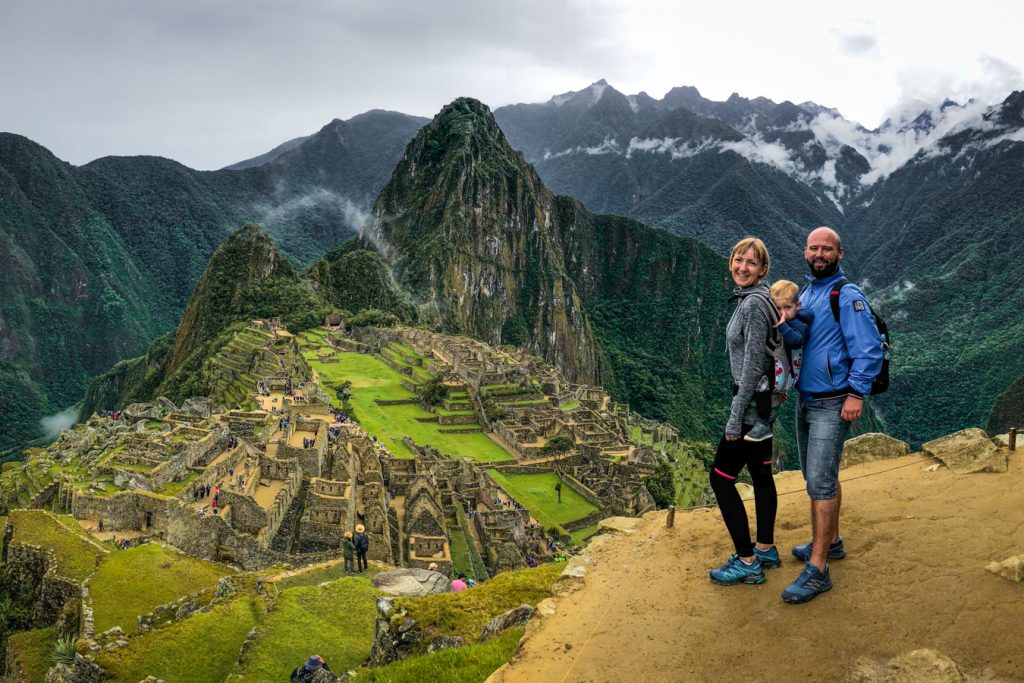
There are three main zones you can visit, depending on the type of ticket you get:
Each one offers a different level of difficulty, unique views, and a different experience for the traveler.
It is the most popular and accessible option, perfect for most visitors and especially recommended for those traveling with family.
The tour starts by going through the Entrance Gate, moving through agricultural terraces that show Inca engineering, until you reach the main viewpoint, where you get the classic postcard of Machu Picchu with Huayna Picchu in the background.
The initial climb to the viewpoint is the most demanding part, as it includes several stairs. In the rainy season (November to March), the stones become slippery, so caution is recommended.
Inside the citadel, the paths are of well-maintained dirt and stone, comparable to a simple walk in a natural environment. This allows parents with babies in carriers to tour without major difficulty.
Recommendations:
This hike is a favorite for those who seek a physical challenge and stunning panoramic views. From the top, you can see the entire citadel, surrounded by green mountains and the Urubamba River at the bottom of the valley.
The path combines steep dirt trails with long stone stairs, some quite high. The ascent requires stamina and good physical condition, so it is recommended for travelers with previous trekking experience.
Who can do it?
Tips:
The ascent to Huayna Picchu is considered the most challenging and exciting of the three accesses. From the top, you get one of the most spectacular views of Machu Picchu, with the citadel spread out in the middle of the mountain landscape.
The path is narrow and very steep, with almost vertical sections next to cliffs. One of the most famous points is the sector known as "The Stairs of Death", a series of narrow and steep steps that demand a firm footing and concentration.
Who can do it?
Important details:
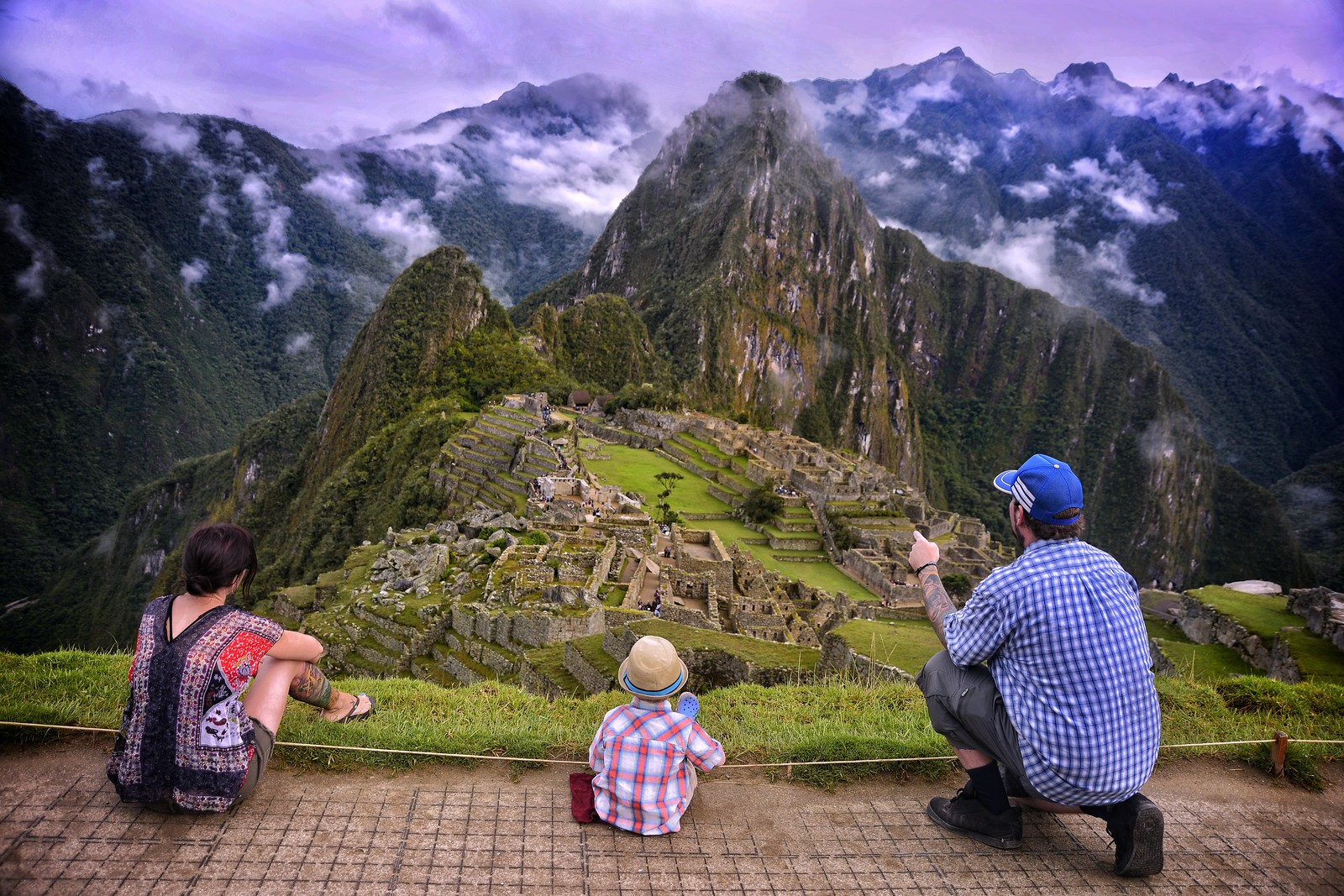
At the entry point to Machu Picchu, we had to show our tickets before we were allowed into the sanctuary. Once they were presented and accepted, we walked excitedly on the paved pathway towards the climb to the ruins.
We were constantly on the lookout for things to do in Machu Picchu, so anytime we saw something for kids, we made sure to stop and check it out.
We stopped briefly at a set of plaques near the entrance, where Edward told us the story of how Hiram Bingham re-discovered the Machu Picchu Sanctuary.
Bingham was guided up the mountain by the 10-year-old son of a local farmer. This story had our boys absolutely stunned. They loved the idea that children held the secret to Machu Picchu before outsiders discovered it. Edward was full of Machu Picchu facts for kids that he would throw out randomly to keep the boys’ interest piqued.
At the end of the path, we began our climb up to the upper part of the Machu Picchu ruins. The climb isn’t an easy one. Many people were stopping to catch their breath along the way. C was able to climb the route without issue. Kevin carried D most of the way, mostly because his little legs weren’t moving as fast as Kevin’s excitement to bring the kids to Machu Picchu.
After climbing through the Machu Picchu cloud forest for about 20 minutes, our efforts were finally rewarded. We had our first glimpse of the Machu Picchu Sanctuary. Seeing the llamas tending to the grass, I could just imagine how Hiram Bingham must have felt when he first laid eyes on the site, and he saw the local families farming there.
The first view of Machu Picchu is like entering a postcard. But this postcard can be seen, smelled, and touched. When combined with the crisp mountain air, it was pure magic.
Edward explained to us how the Machu Picchu ruins are divided into agricultural and urban sectors. His voice drifted in and out of my consciousness. I couldn’t help but be mesmerized by this wonder of the world.
After taking hundreds of pictures, we proceeded to explore the Agricultural section with a stop at the Guardian’s house. It is one of the few structures in Machu Picchu with a reconstructed roof. It also only had three walls (also known as a wayrana). We learned how it is thought to have had an astronomical function.
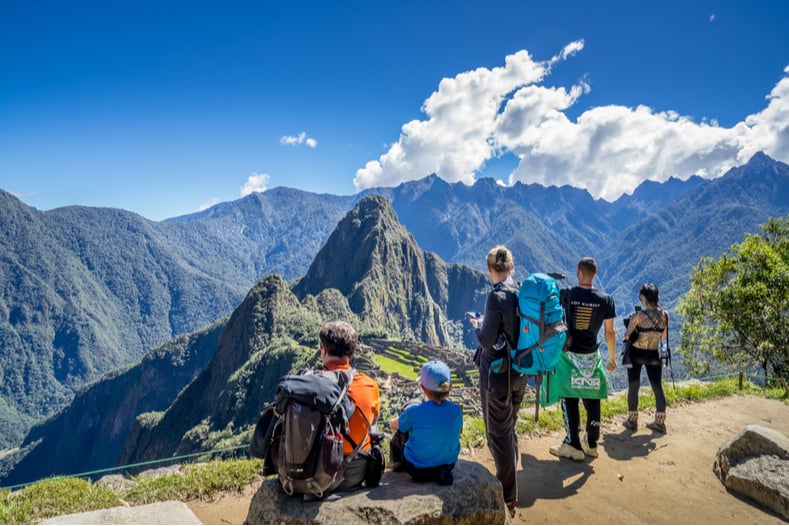
After taking in the scenic views of Machu Picchu from the guardhouse, we slowly began making our way down the steep staircase toward the city itself. The children needed a bit of help with the tall, uneven stairs. While the photos make everything sound incredibly steep, the edges are fairly layered, so while it’s good to keep children in Machu Picchu close by, very few of the areas are actually as dangerous as they appear in photos.
Before I knew it, we had reached the official end of the Inca Trail. We were standing at the famous Sun Gate to Machu Picchu. The boys had to be called back so we could take the obligatory family picture at the entrance of the Urban Sector. They just couldn’t wait to explore the playground in front of them.
It was fascinating learning about the features of the Temple of the Sun, discussing the Royal Tomb and exploring around Inka’s house. C also couldn’t get enough of The Temple of the Condor.
The marriage between natural bedrock and Inca stonework here and at other Inca sites are just spectacular. It seemed that every angle of Machu Picchu was more thrilling than the next. And of course, with all of the corridors, passageways, and rocks to climb, the kids were in heaven!
Also, the boys particularly enjoyed hiking around Machu Picchu and playing spot the wildlife. The resident llamas of Machu Picchu were everywhere. We also saw many birds and playful viscachas.
In fact, the viscachas (they look like a cross between a rabbit and a hamster) were always hiding among the rock walls. It was a game for the boys to see where we would find them. Chasing llamas is one of our boys’ favorite things to do in Machu Picchu.
Beware though! The llamas OWN Machu Picchu. And if you get in their way, they’ll knock you right over. Check out our video at the bottom of the page to see what happens when you get in their way.
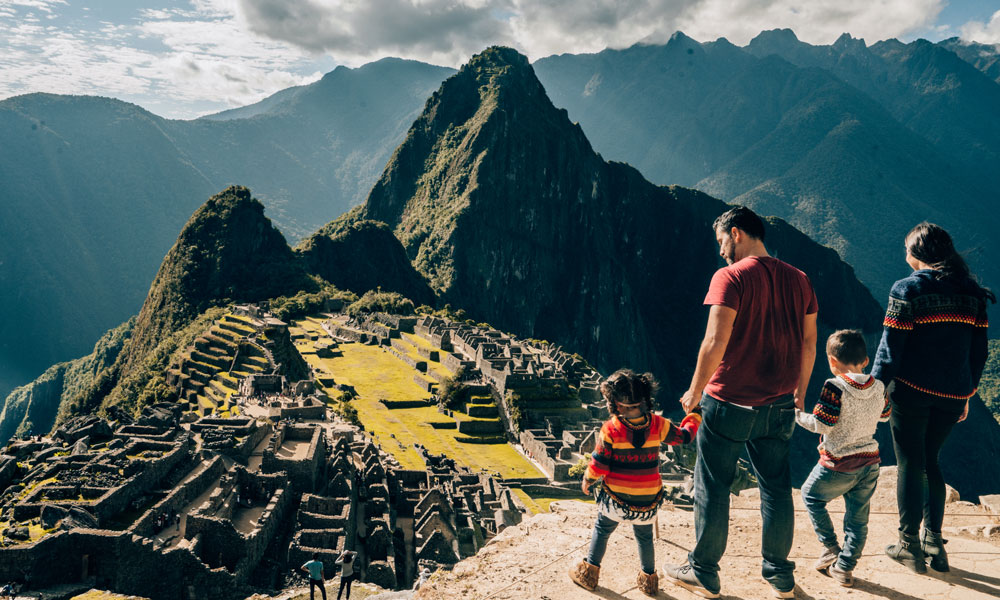
For those who seek adventure and nature, getting to Machu Picchu by walking is one of the most rewarding ways to see this wonder. There are several trekking routes that cross Andean landscapes, cloud forests, and ancient Inca roads. These are the most outstanding hikes: